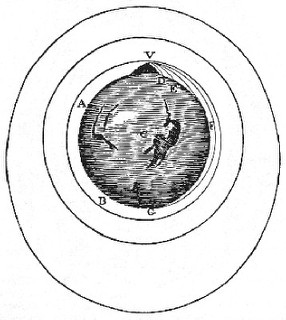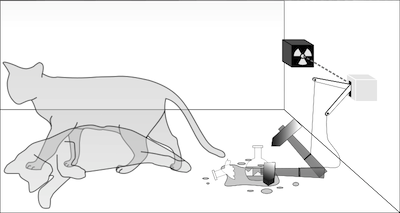On the Ethics of Imaginary Research
John D.
Norton*
Department of History and Philosophy of Science
Center for Philosophy of Science
University of Pittsburgh
www.pitt.edu/~jdnorton
The purpose of this note is to
draw attention to hitherto overlooked ethical problems raised by the now
widespread techniques of imaginary research. Three principles are proposed as
ethical guides for future research practice.
1
Introduction
Real experimental practice has long been controlled by multiple regulations,
designed to prevent a wide range of improper experimental
procedures.1 They ensure the dignified treatment of human subjects
and the humane treatment of experimental animals. Researchers conducting real
experiments routinely submit their protocols for the approval of IRB's,
Internal Review Boards, and research establishments maintain appropriate
registration.
Imaginary experimentation and research has so far been exempt from similar
regulatory attention. This lapse results from the dismissal as merely imaginary
of the harms that may arise from imaginary experimentation. In the broader
philosophy of science and philosophy of mathematics literature, realism remains
a hotly contested viewpoint. Yet the realist prejudice that strictly partitions
everything into real and imaginary is all that sustains this dismissal of
imaginary harms.
2
It has long been apparent that a more complex analysis of the real and
imaginary is needed. What has prevented a full recognition of the scope of the
imaginary harm wrought by imaginary experimentation is a lack of adequate
documentation. One can scarcely doubt the irresponsibility of Galileo's Sagredo
when he cast canon balls "weighing one or two hundred pounds or more" from the
heights.2
Since no reports are given, we can only imagine the peril this experiment
brought to innocent passers-by. Indeed we can now see the utter moral vacuity
of Salviati in his excoriation of Aristotle for not imagining just such an
experiment.
One may argue that the vague description of the location of Sagredo's
experiment means, at best, that no one person specifically was endangered, or,
at worst, that the dangers were widespread and thus diluted. Unfortunately
later implementations of Sagredo's experiment have been more specific in their
placement and thereby localized the imaginary harms more narrowly.
3

The distinctive leaning tower of the figure and the period dress locate the
experiment in sixteenth century Pisa, just as it illustrates the willful
negligence of the experimenter.
One would like to think that the tradition of thought experimentation
initiated by Galileo evolved towards more benign experiments in the hands of
later, more enlightened practitioners. Unfortunately, with greater theoretical
power comes the ability to wreak greater harm. We need only look to Newton's
famous imaginary experiment of a stone projected from a mountain into
dangerously low earth orbits.3

The figure is too coarse for us to see the dangers to inhabitants of many
continents. We can only imagine them.
4
This reckless experimental practice must submit to the discipline of
principles and regulation. In the following, I will articulate three ethical
principles to which, I urge, all practitioners of imaginary research must be
held.
First Principle
Non-existence does not deprive a living being of rights.
We have long accorded rights to non-existents. A familiar example arises in
the case of someone discharging a firearm in a crowd. Even if the discharge
harms no real person, the perpetrator is still guilty of gross negligence and
is subject to prosecution and punishment. We justify this treatment by
imagining what could have happened. What if someone were in the line of fire?
The outcome could have been deadly.
That is, we are quite willing to exact severe legal penalties in defense of
the rights of an imaginary person whose harms are only imagined.
A related matter that will not be pursued here in the detail it deserves is
the mistreatment of animals. It is, sadly, routine in the practice of imaginary
research. Only the most egregious of cases have received popular attention. Who
has not been horrified at the sadistic torture by Erwin Schoedinger of his cat?
Yet it is tolerated merely because the poor beast has the additional misfortune
of non-existence.

5
Second Principle
All imaginary experimentation must be subject to cost-benefit
analysis.
This principle is no different from the demand placed on real
experimentation. Medical research that proves lethal to an experimental subject
may yield results that save future lives. Yet the cost of the lives assuredly
lost is universally judged greater than the benefit.
In the case of thought experimentation, one must always ask if the
experimental goals might be achieved better by a real experiment. One might
think that an imaginary experiment is always to be preferred to a real one in a
cost benefit analysis. For the real harms brought by a real experiment are most
likely vastly worse than the imaginary harms of an imaginary experiment.
While that relative assessment of the magnitude of possible harms of real
and imagined experiments is likely correct, it does not take into account the
frequency with which the experiments are conducted. Real experiments are rarely
conducted more than once or twice; they are too hard and too expensive. An
experiment in thought, however, once it is created, can be replicated at will.
If it is well-crafted, just this is likely to happen.
Even if the harm wrought with each replication of the imaginary experiment
is minuscule, the accumulated harm of very many repetitions can readily exceed
the harm of a single execution of a real experiment, especially if the latter
is well-controlled.
If it is determined that a thought experiment is unavoidable, a corollary is
that the least harmful design should be sought, compatible with the successful
functioning of the experiment. Schroedinger did not need to torture a cat to
achieve his result in quantum theory. A mouse or even a cockroach would have
sufficed. But an amoeba would not.
6
Third Principle
Thought experimentation must proceed under informed consent.
The author of a thought experiment carries a special burden not placed on
creators of real experiments. For all readers become the author's research
assistants, actively participating in the execution of the experiment.
Imaginary scenarios can be created in text quite rapidly and so fast that the
reader can become an unwitting accomplice in the creation of imaginary harms.
What if you are a brutal dictator of a small nation who oversees the mild
reprimand of a few innocent citizens. The harm has been imagined before the
reader has a chance to consent to participation in its creation.
In this case, the damage was small. It was merely misplaced reprimands. But
what if it had been a genocide?
More difficult issues are raised by the choice of language. What if a
thought experiment involving great harm is written in a language a reader does
not know. Do we discount the harm merely because the reader did not understand
the language read? We are loath to issue complete exculpation for speech acts
on these grounds. A person inciting a mob to violence by calling "kill him" is
not excused if we learn that the person calling does not understand English.
Should it be any different with imaginary experiments? What if the experiment
is read aloud?
7
Conclusion
One may doubt whether these three principles will survive longer term
philosophical scrutiny. That remains to be seen. However one should not allow
those doubts concerning the future to prevent action in the present. As long as
we are unsure of the severity and extent of the harms created by imaginary
research, we should act prudently to limit the possible harms. We cannot assume
that realists' hesitations concerning imaginary harms will prevail over the
well-reasoned fears of the anti-realists. We cannot play "wait and see," while
risking the multiplication of harms that may be irreparable.
How does one heal the concussion of an imaginary passer-by or the poisoning
of a fictitious cat? Is the cat I bring back to life in my imaginary medical
experiment the same one that died in your experiment? Or have my efforts to
revive your casualty merely duplicated the harm?
As long as these doubts remain, I call upon universities and other research
centers to implement Internal Review Boards for imaginary experimentation and
that these IRBs be commissioned to hold their researchers to the principles
enunciated here.
8


